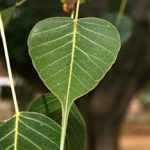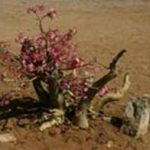TREE LIFE
September 2016
MASHONALAND CALENDAR
Saturday 3rd September: Botanic Garden Walk. It is spring time, so there could be many trees in flower. Meet in the car park at 0845 to start at 0900 for a glorious 1½ hours walk.
THERE IS NO SUNDAY OUTING IN SEPTEMBER
Saturday 24th September: Outing to the home of Norman and Eleanor Dickens in Umwinsidale. Meet at the usual time of 1415hrs for a 14.30 start.
PLANTED TREES OF HARARE Jacaranda mimosifolia
Jacaranda is a genus of 49 species of flowering plants in the family Bignoniaceae, which is native to tropical and subtropical regions of the Americas. Jacaranda mimosifolia or Blue Jacaranda, the species we know in Zimbabwe, thrives in full sun and on sandy soils and has been introduced to most other tropical regions, particularly Nepal, Australia, South Africa and Zimbabwe, where the generic name Jacaranda (thought to be derived from a Paraguayan language) is also used as the common name. In California the Jacarandas bloom twice a year.
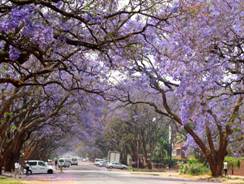
Jacaranda mimosifolia trees
Mature plants can survive in colder climates down to −7 °C, however, they may not bloom as profusely. Younger plants are more fragile and may not survive in colder climates when temperatures drop below freezing.
Jacaranda mimosifolia is a large tree from 20 – 30m in height, with bipinnate leaves and imparipinnate leaflets that are 15 – 40cm by 10 – 20cm. The slightly asymmetric, sessile, alternate and markedly apiculate leaflets are oblong to elliptic, with 15 – 25 leaflets per leaf The flowers are produced in conspicuous large panicles, each flower with a five-lobed blue to purple-blue corolla. Only a few species in the genus have white flowers.
The genus Jacaranda differs from other Bignoniaceae in that it has a staminode that is longer than the stamens and has tricolpate pollen. This type of pollen has three or more pores set in furrows or grooves called ‘colpi’. By contrast, most other seed plants produce monosulcate pollen, with a single pore set in a differently oriented groove called the sulcus.
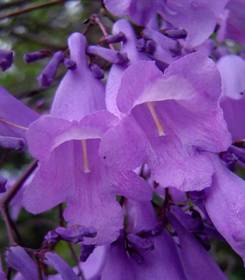
Jacaranda mimosifolia flowers
The fruit is an oblong to oval flattened capsule containing numerous slender seeds with a prominent wing that are easily dispersed by the wind. Unfortunately for this beautiful tree that heralds our spring, seed dispersal is so effective and germination in damp ground so efficient that Jacarandas are now listed as invasive weeds in many countries where they have been introduced.
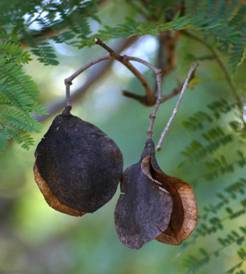
Jacaranda mimosifolia pods
Jacaranda wood is easily worked and turned and is often made into sculptures because of its ease of use. In Kenya a conservation programme advocates the use of Jacaranda wood and the sale of Jacaranda carvings as a means to save the indigenous woodlands from over-harvesting. In Brazil the wood is also used for the body of acoustic guitars.
Several towns and cities globally are known for their beautiful Jacaranda-strewn streets in flowering time and Harare is one of those – not only in the centre of town along Leopold Takawira and Josiah Chinamano, but also in many surburban streets such as Hindhead Ave in Chisipite or Court Rd in Greendale, where one has the impression of following the Emperor when the Jacarandas are in flower.
Sources:
Photos: Isla Grundy; Bart Wursten, Flora of Zimbabwe.
Flora of Zimbabwe: Jacaranda mimosifolia. www.zimbabweflora.co.zw/
Wikipedia:Jacaranda https://en.wikipedia.org/wiki/Jacaranda
– Isla Grundy
OUTING TO HENRY HALLAM DAM 17th July 2016
On a cold, cloudy, winter morning 13 members gathered at the Mukuvisi car park before setting off down the Seke Road to the Henry Hallam Dam, now called the Harava Dam on the Hunyani River.
The entrance to the park was rather run down with bent fences and washed out roads and rubbish, an attendant was there to collect $2.00 a head open the gate. The road in to the dam is quite passable and apart from a couple of chopped down trees the bush was untouched. The woodland has been protected and there is a great variety of trees with some very large specimens especially Brachystegia spiciformis.
If protected the woodland will recover and chopped trees will coppice and produce sizable trunks and branches in 17 years. Most of the chopped trees were taken at waist height and there were several examples of regrowth which, if managed by pruning off the smaller branches, will grow into usable timber.
We parked the cars below the dam wall in the picnic area marred with rubbish and set our sights on the surrounding Miombo woodland led by Mark and Meg who always impart so much knowledge to make this a most fascinating day. We had a list of 70 species at the end of the day which does not include the odd climber and herbaceous plants.
Several large termite mounds provided a habitat for a number of species which had grown to significant size, such as Schotia brachypetala, the Weeping Boer Bean tree. Rothmannia fischeri has very soft leaves, opposite but sometimes four leaves from the same node. The fruit is round and hard and up to 6.5 cm shiny dark green with pale green speckles.
We found Olea europaea, which has narrow, opposite, dark green, lanceolate drooping leaves with a small hook at the tip. The fruit is very small, but in the past the tree was used as the base onto which were grafted commercial olive species. This is no longer necessary as the commercial cultivars now grow well without grafting.
Maerua triphylla a small tree or much branched bush, the leaves are trifoliate, the terminal leaf being twice as long as the laterals. Gardenia volkensii is a large rigid tree with smooth pale grey bark and glossy dark green leaves in whorls of three. Ochna pulchra the Mermaid Tree, has a smooth top of the trunk while the bottom is scaly ! Also known as the Peeling Bark Ochna. Several of the Msasas had long strips of bark taken for tying bundles of grass These gashes will heal as long as the tree has not been ring- barked.
Our next find was Croton gratissimus – the flowers were in bud, having appeared in February, but they will only open with the onset of the rains in September/ October. There are more male flowers along the flower spike with a few female flowers among them, mostly occurring at the base of the spike.
Euclea natalensis has very dark green leaves, mostly sooty. They are spirally arranged and not opposite as in most Euclea species.
It was nice to see that a couple of Aloes were in flower – Aloe greatheadii with dusty pink flowers and Aloe chabaudii growing among the rocks.
We also came across Grewia monticola, Grey Grewia, referring to the grey or dark brown bark. The leaves are leathery and very discoloured, being bright green to grey green above and greyish to almost white below. The margin is toothed and there are three veins from the base. It has yellow flowers from October to January.
Combretum collinum is a small tree growing among the rocks. The upper side of the leaves is usually dark green and the under surface paler green to silvery, with variously dense woolly hairs or tiny scales so that it looks as if it has been dotted with a white ballpoint pen. The tree has four-winged pods that are rusty red, becoming dark brown when mature and these remain on the tree for most of the year.
Our last find was Leptactina benguelensis, a low growing plant which has green leaves at the moment and after rain will bloom with beautiful white flowers, followed by tiny Gardenia-like fruit.
We enjoyed a very pleasant break for lunch and then explored an area near some wonderful rocks further back along the road. Thank you to all who came and contributed to a very pleasant and happy day.
Plants recorded:
Acacia sieberiana, Afrocanthium lactescens, Albizia amara, Albizia antunesiana, Allophylus africanus,
Bobgunnia madagascariensis, Boscia salicifolia, Brachylaena rotundata, Brachystegia spiciformis, Burkea africana, Cassia abbreviata, Clerodendrum eriophyllum (White Cats Whiskers), Combretum collinum, Combretum molle, Combretum zeyheri, Coptosperma neurophyllum, Croton gratissimus, Dalbergia nitidula, Dichrostachys cinerea, Diospyros natalensis subsp. nummularia, Diplorhynchus condylocarpon, Ekebergia capensis, Euclea crispa, Euclea natalensis, Euphorbia ingens, Faurea saligna, Ficus burkei, Ficus natalensis, Ficus sur, Flueggea virosa, Gardenia volkensii, Grewia decemovulata, Grewia flavescens, Grewia monticola, Indigofera rhynchocarpa, Lannea discolor, Maerua triphylla, Maytenus undata, Mystroxylon aethiopicum
Ochna puberula, Ochna pulchra, Olea europaea, Ozoroa reticulate, Pavetta gardeniifolia, Pavetta schumanniana,
Peltophorum africanum, Pittosporum viridiflorum, Protea welwitschii, Pseudolachnostylis maprouneifolia, Psydrax livida, Pterocarpus angolensis, Pterocarpus rotundifolius, Rhus tenuinervis, Rothmannia fischeri, Schotia brachypetala, Senna singueana, Strychnos cocculoides, Strychnos potatorum, Strychnos spinosa, Syzygium cordatum, Tarchonanthus camphoratus, Tricalysia niamniamensis, Vangueria infausta, Vangueria randii, Vangueriopsis lanciflora, Vernonia glaberrima, Vitex payos, Ximenia caffra, Ziziphus mucronata, Aloe chabaudii,
Aloe greatheadii
Climbers:
Helinus integrifolius, Pentarrhinum insipidum, Pterolobium stellatum
Exotics:
Psidium guajava (Guava), Jacaranda mimosifolia, Duranta erecta
– Ann Sinclair
OUTING TO THE ALEXANDER’S PROPERTY IN RUWA
21st August 2016
We were kindly invited by Jo and Tony to their property in Ruwa for the day. Most of us met at Mukuvisi at the scheduled time. It was a long time since I last attended a Sunday meeting. While we waited in the car park for others to come, it was great catching up with people who I hadn’t seen in a while. Just after 9am we divided ourselves into two vehicles and headed out to Ruwa. It was a perfect day to go on a trip out of town.
We were greeted on arrival by Tony and Jo and their son Nick and after some introductions we started our walk, lead by Tony Alegria. There were eleven of us on this walk. John who works for Jo and Tony also joined us on the walk, he too has an interest in trees.
We firstly looked at some of the indigenous and exotic trees in the garden. On the indigenous side, we found trees such as Acacia amythethophylla, Large-Leaved Acacia; Anthocleista grandiflora, the Forest Big Leaf or Tobacco Leaf; Trichilia dregeana, Forest Natal Mahogany; Albizia gummifera, Smooth Bark Flat Crown; Khaya anthotheca, Red Mahogany; Celtis africana, White Stinkwood; Olinia vanguerioides, Zimbabwe Hard Pear; Diospyros lycioides, Red Star Apple; Rauvolfia caffra, Quinine Tree; and Ziziphus mucronata, Buffalo Thorn.
Three exotic trees were identified: Tipuana tipu, the Tipu Tree or Yellow Jacaranda, Schizolobium parahyba , Reach for the Sky and Sapindus saponaria, Eastern Soap Berry. These trees are quite common around Harare as street trees or are to be found in people’s gardens.
We then walked on through a small gate which led us into the natural vegetation of the area, predominately on sandy soils. We followed a clear-cut path through the vegetation, making it easier for us to walk. Some of the trees had started to produce their new leaves such as Searsia longipes, Large Leaved Rhus (now Searsia) with its bright green foliage; Brachystegia spiciformis, Msasa, with its stunning red leaves; and other specimens of Olinia vanguerioides also with red leaves. We came across an area filled with two different Monkey Orange species – Strychnos spinosa, Spiny Monkey Orange, with its large round yellow fruit and Strychnos cocculoides, Corky Bark Monkey Orange, with its smaller green fruit. Two Violet Trees, Securidaca longipedunculata were identified but unfortunately they did not have much leaf coverage or flowers. Tony and Jan joked with us during the walk which provided some entertainment for the group.
As we walked on further, other trees identified were Ekebergia benguelensis, Woodland Dogplum; Euclea crispa, Blue Leaved Guarri; Psorospermum febrifugum, Christmas Berry; and Protea welwitschii, Clusterhead Protea. On a termite mound we identified a number of trees, with different characteristics in such a small area, interesting how nature works. Trees such as Ficus burkei, the Common Wild Fig; Pavetta gardeniifolia, Stink Leaf Brides Bush; Pavetta schumanniana, Poison Brides Bush; and Vangueria infausta, Wild Medlar, to mention a few.
Other trees identified on the walk included Heteropyxis dehniae, Lavender Tree, with its aromatic leaves when crushed; Pterocarpus rotundifolius, Round leaved Bloodwood; Erythrina abyssinica, Red Hot Poker or Coral Tree (in flower at the time); Azanza garckeana, Snot Apple; Vitex payos, Chocolate Berry; Gymnosporia senegalensis, Confetti Spike Thorn; Cussonia arborea, octopus cabbage tree, Vachellia (Acacia) sieberiana, paper bark thorn, Steganotaenia araliacea, carrot tree and the shrub Lippia javanica with its aromatic, medicinal, leaves. One of the trees that we were all keen to see was the Parsley Tree, Heteromorpha arborescens, but it was in poor shape, so not much to see unfortunately.
The property was filled with many Parinari curatellifolia, Mobola Plum, Syzygium guineense, Woodland Waterberry and Syzygium cordatum, Waterberry. We did not look at these trees in great detail but it is worth mentioning their presence on the property.
After quite a long walk, we headed back to the house for some refreshments. Tea and coffee was served along with some sandwiches and other eats provided by the hosts. We sat around, ate our packed lunches and continued in conversion with each other. At about 2pm we left Ruwa and headed back to Harare. All in all, it was a very pleasant outing and very special thanks to Jo and Tony and Nick for their wonderful hospitality.
– Dean Berry
The following appeared in the February issue no. 24, February 1982
LEUCAENA LEUCOCEPHALA
Leucaena leucocephala, hereafter referred to by its common name Leucaena (variously pronounced Loo-see-na, Loo-kee-na, Loo-kay-na and Loo-kuy-na) is, originally a native of Mexico.
Recently we have received a number of enquiries about the use of this very rapid-growing tree which could seem to be the answer to our fire-wood problem, so some facts and figures are timely which have been correlated for me.
Dick Petheram writes – “I first became interested in this as a result of an article in Time magazine in December, 1979. It was a ‘rave’ article describing the tree as capable of growth to 65 feet in 5 years and as providing ‘a bountiful array of food and fuels’. Other virtues described were: soil enrichment through the roots, use as a timber for building houses and making furniture and also for paper pulp. In mid 1981 I saw it in cultivation is West Java; the children chewing the pods. Enquiry in Zimbabwe indicates that the plant is on trial here ‘by Forestry for timber and fuel purposes and by Conex and Devag as fodder’. He goes on to say that it seems our soils are rather more acid and our mean average temperatures are on the low side for it to do really well.
A publication by the United States National Academy of Science says that it is a plant with probably the widest assortment of uses: nutritious forage (very rich in protein), firewood, timber, rich organic fertiliser, windbreaks, firebreaks, ground cover to stop erosion and ornamentation. Individual trees have yielded the highest annual totals of wood ever recorded and as a fodder it is responsible for some of the highest weight gains in cattle feeding on forage.
As a human food its young leaves and small pods are eaten raw as candy or cooked in soups, etc.; mature seeds are roasted and young dry seeds are ‘popped’ as popcorn. It is not recommended for extensive use as it contains a toxin, mimosine (see later).
Under good soil and moisture conditions 1 hectare of Leucaena (mowed to a height of 1 metre every 3 months) can provide foliage containing 500 to 600 kg of nitrogen in a year and, as its roots are as deep as the tree is high, they absorb mineral elements from deep soil layers which are distributed throughout the plant. The foliage harvested in Hawaii during one year contained 44kg of phosphorus, 187kg of potassium as well as calcium and other minerals. The leaves drop profusely and, being small and Acacia-like, decompose rapidly releasing their elements into the soil. Trevor Gordon reports that he grew Leucaena in conjunction with another crop and did not have to fertilise at all.
However, there is the other side. As a Forestry Commission spokesman said in the local press in November, 1980 “Despite recent enthusiastic but ill-informed articles in some popular magazines, Leucaena is not a world-wide panacea for the rapid production of fire-wood and forage. Like all plants, it has its own particular requirements for climate and soil. At first examination typical varieties (in the botanical sense of the word typical – ED) appear distinctly unsuited to most parts of Zimbabwe. It prefers alkaline soils and will not thrive in acid soils, and it requires a hot wet tropical climate, for instance an annual rainfall of 1 500mm or more and all the year round temperatures such as might be experienced at Beira. These climatic conditions are only approached in this country in very limited areas along the high rainfall strip on our Eastern Border below 900m.”
There is another very big snag. The plant contains mimosine, an uncommon amino acid that is toxic to non-ruminants (such as children) at levels of about 10% in the diet and to ruminants (such as cattle) if it is fed in excess of 30% of the total diet for prolonged periods. Symptoms are general ill health, loss of hair, drooling, poor growth and often goitre.
Recently a member of Grasslands Research Station said that there were three species being tested at the moment in Zimbabwe and trials are taking place all over the country. It will probably be more successful in our hotter areas such as Kariba and Chiredzi. In Botswana it has been most successful where it is grazed by cattle from March to May but it is very frost tender and the first frosts flatten it to ground level.
So it has its pros and cons. On the whole it seems to require less frost, a higher average temperature and a more alkaline soil than we have in most areas here, but reports say that there are hundreds of species in Mexico so obviously there is a lot of research to be done yet. Meg has been promised seedlings of three species and has been given seed of Leucaena leucocephala. If anyone would like to be involved in trying this out I know that their co-operation and help would be welcomed at official and society level. – the late Paul Coates Palgrave
MEANINGS OF SCIENTIFIC BOTANICAL NAMES (3)
Pyracantha angustifolia Rose Family, ROSACEAE
The Greek word pur {πυρ} means fire but consequently can also refer to the colours red & yellow, while acantha occurs in many plant names and means a thorn or prickle; angusti- = narrow, folia fairly obviously means leaf or leaves. (The terminal letter ‘-a’ normally indicates that the words are feminine.) So we end up with a narrow-leaf Firethorn/Yellow Hawthorn (not indigenous to Zimbabwe)
It should be remembered that in Greek the capital ‘U’ looks like a ‘Y’ {Υ}, so many of our Anglicised/Latinised words, e.g. Gymnosporia, pyromaniac etc, would be more correctly spelled with a ‘u’ rather than a ‘y’, this letter being pronounced more like an ‘i’ or the sharp ‘u’ in French.
Pterocarpus rotundifolius
Legume Family FABACEAE (LEGUMINOSAE), Sub-family PAPILIONOIDEAE
In Greek ptera {πτερα} meant feathers and pterux {πτερυξ} meant a wing (think of the prehistoric flying creatures pterodactyl and archaeopteryx), so in present-day botanical terms the prefix pter- means winged and is often applied to plants with winged seeds etc. Carpus comes from the Greek karpos {καρπος} meaning fruit. Rotundifolius is self-explanatory, clearly meaning round-leaf. (The terminal letters ‘-us’ indicate that the words are masculine.)
Thus we have a nicely descriptive scientific name for the Round-leaved Mukwa (Bloodwood) which has fruit with a wing around the single seed in the middle, and whose imparipinnate leaves comprise broadly elliptic lateral leaflets and an almost circular terminal leaflet.
Diplorhynchus condylocarpon
Family APOCYNACEAE
Diplo- = double or twofold, from the Greek di-ploos {δι-πλοος}. (Note that di- from Greek and bi- from Latin both mean 2; an amusing example of this is the somewhat ridiculous scientific name for the black rhino, Diceros bicornis, the Two-horn Two-horn!) Rhynchus is connected to rhino- which has to do with noses or beaks. Kondulos {κονδυλος} means, strangely, a knuckle so I don’t see the connection here with condylo-; the modern botanical term Condylus or condyle means “a projection of the endocarp into the seed cavity …” which must mean something to the scientists or scientifically minded! Carpon, like carpus above, means fruit.
From all of that we get the alternative name of Horn Pod for the lovely Wild Rubber Tree with its fat twin pods amongst bright shiny green leaves. All members of this large family (which now includes a very wide variety of plants ranging from ground-level succulents such as Stapelia gigantea, through creepers like Strophanthus kombe and others to fairly big trees like this Rubber Tree, the Toad Tree Tabernaemontana elegans, Frangipani etc,) bear their fruit in pairs.
– Dave Hartung
TONY ALEGRIA CHAIRMAN


